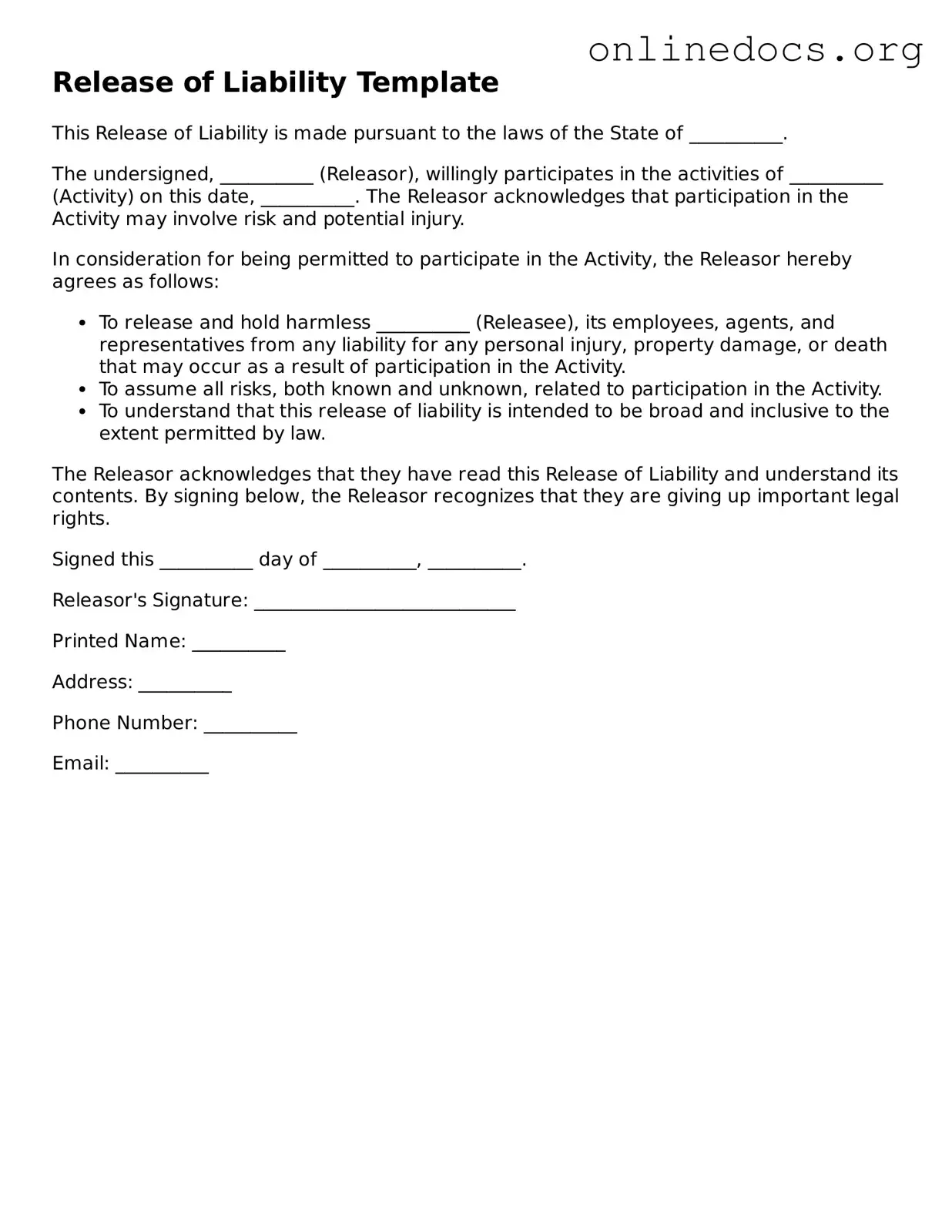Filling out a Release of Liability form can seem straightforward, but many individuals make common mistakes that can lead to complications later on. One frequent error is failing to read the entire document carefully. People often skim through the text, missing critical clauses that could affect their rights. Understanding each section is essential to ensure that you are fully aware of what you are agreeing to.
Another mistake is not providing accurate personal information. This includes your name, address, and contact details. Inaccuracies can create confusion and may even invalidate the form. It is vital to double-check this information before submitting the document.
Some individuals overlook the importance of signing the form in the designated area. A signature is not just a formality; it signifies your consent and understanding of the terms outlined. Omitting a signature can render the document ineffective, leaving you unprotected.
Additionally, many people neglect to date the form. A date is crucial as it establishes when the agreement was made. Without it, questions may arise regarding the timeline of events, potentially complicating any claims or disputes that may arise in the future.
Another common error is misunderstanding the scope of the release. Some individuals believe that signing the form absolves all liability, regardless of the circumstances. In reality, the release typically covers only specific activities or incidents. It’s important to clarify what you are releasing and under what conditions.
People also sometimes fail to consult with a legal professional before signing. While it may seem unnecessary, having a knowledgeable person review the document can provide peace of mind. They can help identify any potential issues or clarify terms that may be confusing.
Lastly, individuals may forget to keep a copy of the signed form for their records. Retaining a copy is important for future reference. If any disputes arise, having the original document can provide essential evidence of your agreement and understanding.
